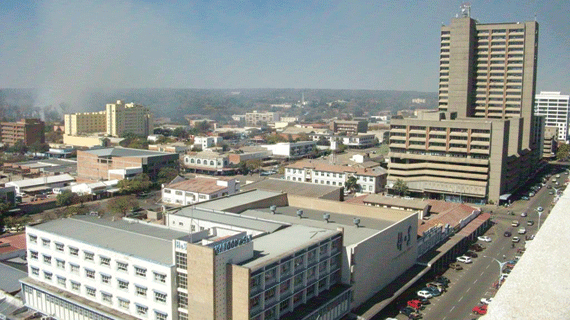
LONDON — Centralised management of forest resources — including charcoal and timber — has not delivered beneficial results for Zambia, instead exacerbating deforestation and environmental degradation while imperilling rural livelihoods, according to new research.
The research revealed that areas of long-term charcoal production on customary land — where traditional controls dictated who was allowed to cut trees and ensured forest regeneration after harvest — could serve as models for sustainable charcoal production.
Widely blamed as key drivers of deforestation in Zambia, charcoal and timber production were nevertheless significant contributors to rural livelihoods, wrote researchers, who urged a return to local management of forests, supported through district by-laws.
“It starts with an acknowledgement that rural communities have the custodianship of the forests, and they should have a say in how these resources are to be used,” said Davison Gumbo, a Zambia-based scientist with the Centre for International Forestry Research (CIFOR).
Increasingly, the industry is being dominated by illegal operators taking advantage of a lack of monitoring and the irregular issuance of licenses, according to the study: Dynamics of the charcoal and indigenous timber trade in Zambia: A scooping study in eastern, northern and north-western provinces.
In the case of timber extraction, the study found that although production and trade were organised, producers were most often operating illegally, and licensing needed to be decentralised.
With 70% of households in Zambia relying on charcoal as an inexpensive fuel for cooking and heating, demand is high for the product, which is typically made in inefficient earthen kilns.
- Chamisa under fire over US$120K donation
- Mavhunga puts DeMbare into Chibuku quarterfinals
- Pension funds bet on Cabora Bassa oilfields
- Councils defy govt fire tender directive
Keep Reading
Demand is highest in urban centres, according to the study, which cited figures from an independent energy study showing that 85% of households in the capital, Lusaka, used charcoal, compared with only 15% in rural areas. The rate of household charcoal consumption in Lusaka was estimated at 1,4 tonnes a year, produced from about 8,8 tonnes of wood, the report said.
Poverty and limited livelihood options drive charcoal production in Zambia, where subsistence agriculture is the dominant land use. Rural poverty rates in the three provinces studied were between 72% and 79%, according to government statistics, it said.
The study predicts demand for charcoal will continue to increase as urbanisation continues in Zambia, unless affordable alternatives are found.
In Zambia, an increase in the spread of markets selling charcoal suggests higher levels of demand, according to the study.
Fieldwork conducted as part of the research found evidence of informal cross-border trade, despite the practice being banned.
As a result, some areas, especially those close to cities and roads, have been completely cleared of trees, while others have been degraded, with young trees cut before the forest could regenerate.
The study concluded that “the impacts of charcoal production have been exacerbated by reduced controls, limited monitoring and ineffective law enforcement.”
“We also found that a large proportion of the area utilised for charcoal production has the potential for rapid forest recovery, especially with good post-harvest management, but sadly no government schemes aimed at better production have been put in place,” Gumbo said.
In a previous publication, Gumbo and co-author Emmanuel Chidumayo reported that throughout the tropics — at landscape scales — charcoal production frequently results in degradation, rather than outright deforestation, reinforcing a recommendation in the recent Zambia study to direct efforts toward “restoring areas that have been degraded through charcoal production.”
Other recommendations include promoting sustainable charcoal production, local management, support for female producers, more efficient kilns and energy-saving stoves.
Zambia’s commercial timber stocks equal 340,1 million cubic meters, more than half of which grows in the three provinces targeted by the CIFOR-led research, according to Food and Agriculture Organisation estimates.
The timber industry provides significant employment with indigenous timber used for rural construction, mining supports, furniture and joinery across Zambia — with a proportion also exported as planks, the report said. Round-log export is banned.
As with charcoal production, the study found that many timber producers were operating without licenses.
Hampered by inadequate staff and resources, the country’s forest department has been unable to uphold laws controlling forest resources, according to the report.
There were indications that timber stocks were decreasing in the three provinces, with alarming reductions in species such as a dense, termite-resistant hardwood known as Zambian teak (Baikiaea plurijuga), noted by the United Nations Environment Program.
The report found that many sawyers needed to travel to Lusaka, Zambia’s capital, for licenses. The report recommended that licenses be available locally, and that district councils and chiefs be more involved in forest management.
– Thompson Reuters Foundation












